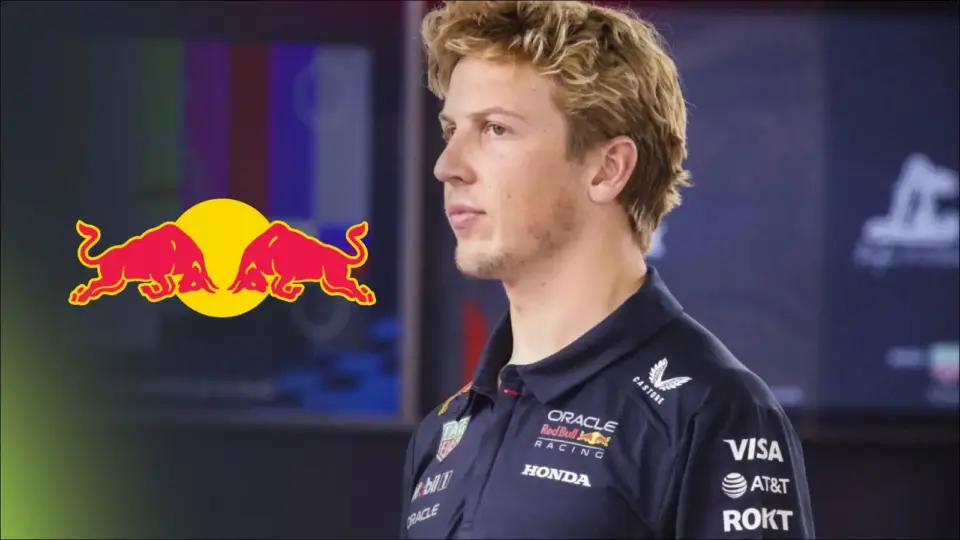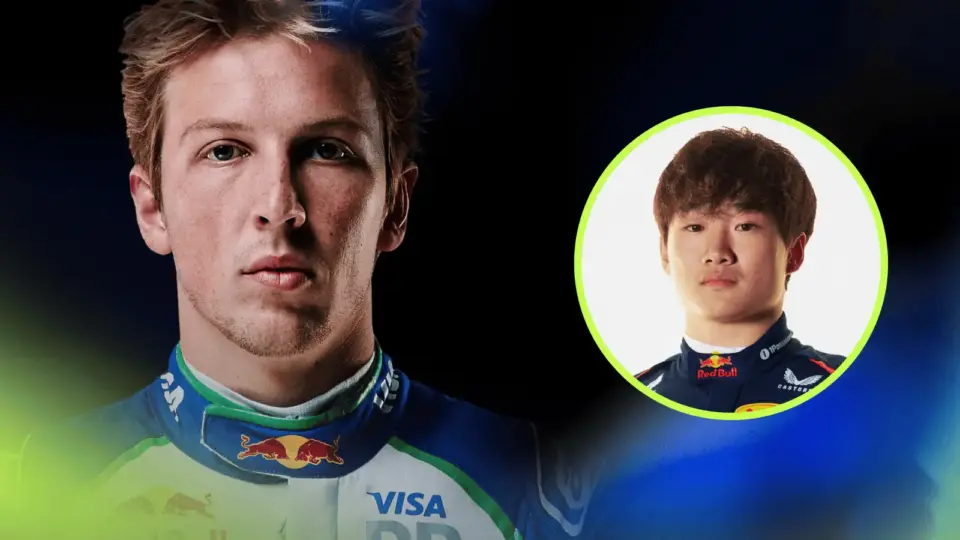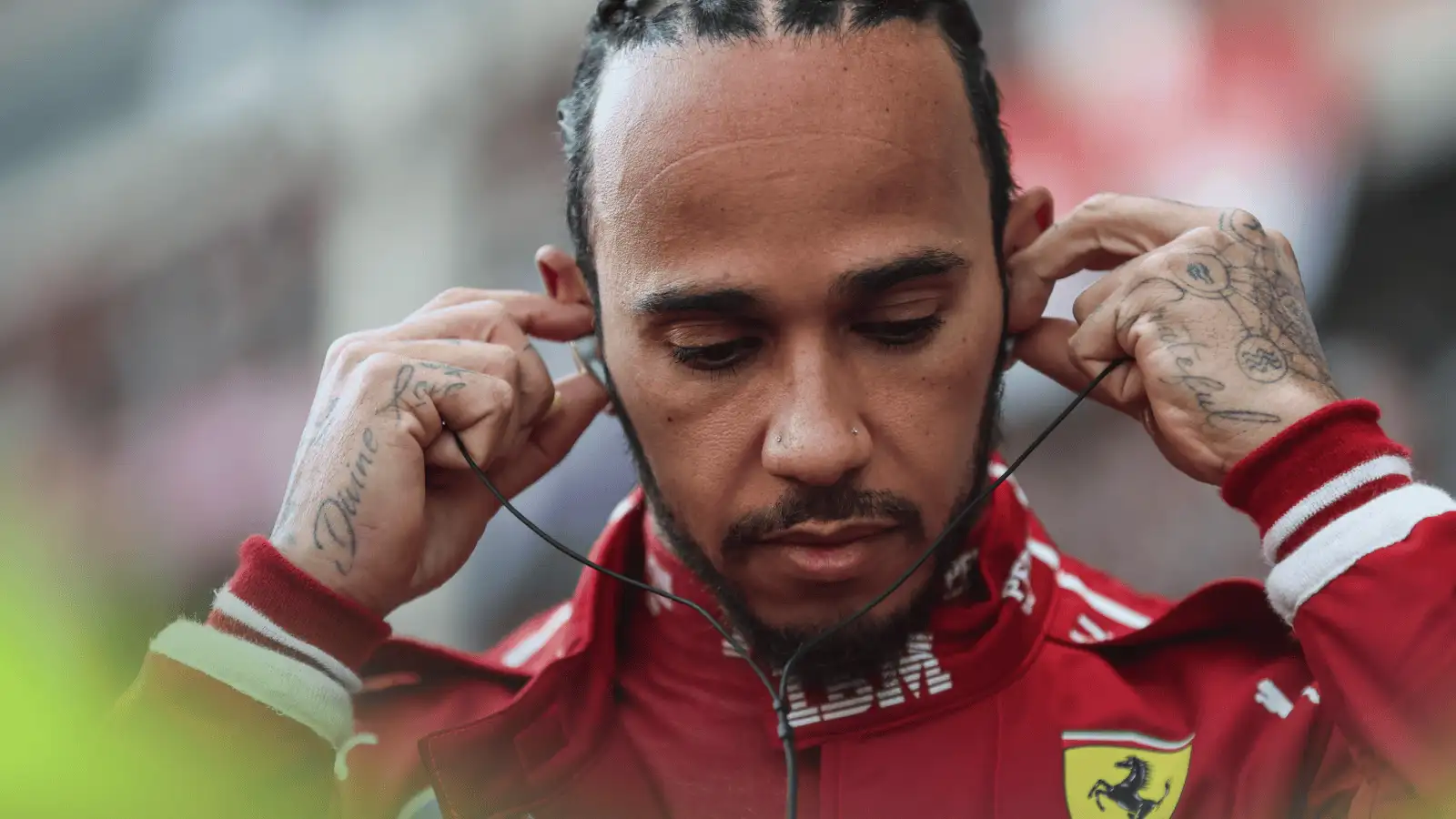Franco Colapinto, the rising Argentinian star, was at the heart of a whirlwind of rumors concerning Red Bull’s driver lineup for the F1 2025 season. With insider whispers suggesting team principal Christian Horner favored Colapinto over current contenders Yuki Tsunoda and Liam Lawson, the F1 community is abuzz.
The driver seat shuffle became a hot topic after Sergio Perez’s departure left a critical vacancy. While Red Bull eventually chose Lawson, only to swiftly replace him with Tsunoda, it’s been hinted that Horner had his sights set elsewhere—particularly on Colapinto, who had a noteworthy stint with Williams.
Red Bull’s Strategic Shuffle
In the aftermath of Sergio Perez’s exit, Red Bull was at a crossroads, strategizing their next move to maintain their competitive edge. Lawson, brimming with potential, was brought in after showing promise with Racing Bulls. Yet, his early performances were lackluster, leading to a swift driver swap. Tsunoda was brought in, leaving Lawson to ponder his next steps back at the junior squad.
The swift change underscored the intense pressure and high expectations placed on Red Bull drivers. Each move sparked conversations about the team’s long-term strategies and potential power plays in the highly competitive world of F1 racing.
Christian Horner’s Alleged Preference
Ralf Schumacher stirred the pot by claiming Horner wanted Colapinto alongside Verstappen. This claim arose from Colapinto’s impressive debut with Williams, where he scored points in multiple races, showcasing his capability to compete at higher levels. Yet, internal dynamics within Red Bull seemed to shift the focus back to their existing talent pool.
Helmut Marko, Red Bull’s senior advisor, is suggested to have played a pivotal role in backing Tsunoda and Lawson, despite Horner’s alleged interests. Marko’s influence within Red Bull cannot be understated, often guiding the team’s driver lineup decisions based on the broader vision for their long-term success.
The Rising Star: Franco Colapinto
Colapinto, while not securing a direct seat for the 2025 F1 season, made significant waves during his time with Williams. His performance was not without flaws, marked by a few crashes, but his potential was undeniable, attracting interest from major teams.
His subsequent role as an Alpine reserve reflects his growing reputation and the F1 community’s recognition of his talents. Many believe it’s only a matter of time before he secures a full-time seat again, given his impressive track record and adaptability on the circuit.
Schumacher’s comments about Horner’s interest in Colapinto highlight an ongoing behind-the-scenes battle, one that could redefine team strategies across the sport. This situation illustrates the complex web of factors influencing driver selections beyond just on-track performance.
Racing Bulls: Caught in the Crossfire
The decision to move Lawson back to Racing Bulls and promote Tsunoda raised eyebrows. The junior team had started the season strongly, thanks in part to Lawson’s contributions alongside rookie Isack Hadjar.
This unexpected twist posed questions about team dynamics and the stability of the driver development pathway within Red Bull. Schumacher criticized the decision, highlighting the risks of disrupting an already well-performing team.
His insights reflect broader concerns about how constant driver changes could impact team morale and performance, emphasizing the delicate balance required in managing a premier F1 team.
The Verstappen Factor
Max Verstappen’s presence in the Red Bull team adds an additional layer of complexity to any driver decision. His status as a four-time World Champion creates a high benchmark for any teammates, potentially impacting new entrants like Tsunoda.
Schumacher issued a stark warning about the challenges of partnering with Verstappen. As a driver who has influenced car development significantly, being his teammate is seen as a challenge, not an opportunity.
The narrative surrounding Verstappen’s dominance and team influence further complicates the decision-making process for Horner and his team, forcing them to weigh each factor carefully.
The Podcast Revelations
Ralf Schumacher shared his thoughts during a podcast, offering a glimpse into the complex dynamics at play within Red Bull. His views, albeit controversial, have sparked discussions across the F1 community.
The revelations have added fuel to the fire, encouraging fans and experts alike to speculate on what the future holds for drivers like Colapinto, Lawson, and Tsunoda. With multiple narratives at play, the podcast highlights the unpredictable nature of F1 decision-making.
These discussions highlight the unique pressures faced by top teams, where every decision is scrutinized and speculated upon, keeping fans and analysts on their toes.
The Road Ahead for Liam Lawson
Returning to Racing Bulls, Lawson now finds himself in a peculiar position. Despite the setback, he remains hopeful about reestablishing his credentials and proving his worth in the F1 arena.
His recent experiences serve as a reminder of the high stakes involved in F1, where fortunes can change rapidly. However, Lawson’s determination to climb back into a top team seat remains unwavering.
This scenario paints a vivid picture of the challenging landscape new drivers must navigate within elite teams, where opportunities are as fleeting as they are rewarding.
Yuki Tsunoda’s Big Chance
Tsunoda’s promotion to Red Bull offers him a fresh opportunity to showcase his talents, particularly in front of a home crowd at Suzuka. The race will be a critical test of his capabilities among the sport’s elite.
For Tsunoda, succeeding at Red Bull means adapting swiftly to the demands and pressures of competing alongside Verstappen, one of the sport’s most formidable figures.
Tsunoda’s journey highlights the ups and downs faced by young drivers as they transition from promising talent to established competitors in the high-octane world of F1.
Schumacher’s Insights
Schumacher’s remarks provide a candid look into Red Bull’s internal dynamics, reflecting tensions and aspirations among team leaders. His insights offer a unique perspective on the challenges Horner faces in aligning his vision with Marko’s objectives.
Despite the potential fallout, these insights remind us of the dynamic and often unpredictable nature of F1 leadership, where strategic decisions are influenced by a myriad of factors beyond mere talent.
Ultimately, these revelations underscore the constant evolution of team strategies in F1, where each move has the potential to alter the course of a season.
F1 fans and insiders continue to speculate on the implications of Red Bull’s recent decisions. As the season unfolds, the competing narratives and strategic maneuvering promise more twists and turns.
The Colapinto saga suggests that Red Bull’s search for the perfect driver combination is far from over, keeping spectators eagerly anticipating the next chapter in this thrilling F1 narrative.










